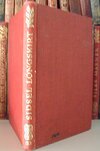Hans Aanrud (1863–1953)
Autore di Lisbeth Longfrock
Sull'Autore
Fonte dell'immagine: Photo: Vidar Iversen
Opere di Hans Aanrud
Fyrabendsarbeide. 2 copie
Storkarer 2 copie
Fortællinger Bind 4 1 copia
Fortællinger Bind 3 1 copia
Fortællinger Bind 2 1 copia
Samlede verker, 3 , Hans Aanrud, 1 copia
Fortællinger B. 3 1 copia
Fortl̆linger. B.4 1 copia
Fortællinger Bind 5 1 copia
Fortællinger B. 1 1 copia
Farvel Fantdal- 1 copia
Téli éjszaka 1 copia
Samlede verker 1 copia
Samlede verker Bind 1 1 copia
Samlede verker Bind 2 1 copia
Smaafæ 1 copia
Samlede verker Bind 3 1 copia
Nye historier til opplesning 1 copia
Norske noveller / B.1 1 copia
Fortællinger Bind 1 1 copia
Opere correlate
Etichette
Informazioni generali
- Nome canonico
- Aanrud, Hans
- Nome legale
- Aanrud, Hans
- Data di nascita
- 1863-09-03
- Data di morte
- 1953-01-11
- Sesso
- male
- Nazionalità
- Norway
- Nazione (per mappa)
- Norway
- Luogo di nascita
- Auggedalen, Gausdal, Norway
- Luogo di morte
- Oslo, Norway
- Attività lavorative
- author
children's book author - Breve biografia
- Norwegian author Hans Aanrud was born in 1863 in the valley of Auggedalen, in the province of Gausdal. Although he moved to Oslo after he began to enjoy some literary success, the rural life of his early years would inform much of his work. Aanrud wrote plays, poetry and stories, and is particularly remembered for children's books such as Sidsel Sidsærk (1903) and Sölve Solfeng (1910). Aanrud died in 1953. (source: Wikipedia)
Utenti
Recensioni
Liste
Potrebbero anche piacerti
Autori correlati
Statistiche
- Opere
- 31
- Opere correlate
- 3
- Utenti
- 77
- Popolarità
- #231,246
- Voto
- 3.6
- Recensioni
- 5
- ISBN
- 16
- Lingue
- 1






